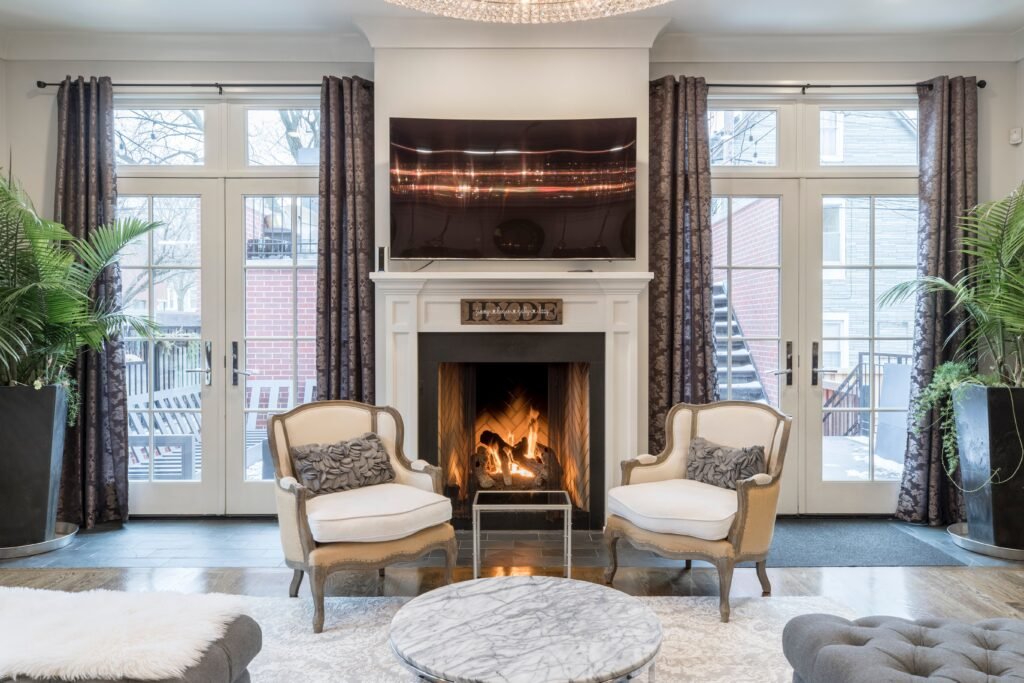Symmetry and Balance in Home Staging & Interior Design:
Creating a sense of order and visual harmony in a space through balanced furniture placementScale and Proportion in Home Staging & Interior Design: The relationship between the size and dimensions of furniture, objects, and architectural elements within a space. The Importance of Scale and Proportion in Home Staging - Why it's Something to Consider Scale and Proportion in home staging ... More and repetition of design elements.

The Importance of Symmetry and Balance in Home Staging – Why it’s Something to Consider
Symmetry"Balance" in Home Staging & Interior Design: A sense of visual equilibrium and harmony achieved through arrangement, scale, color distribution, or symmetry, creating a pleasing and comfortable composition. The Importance of Balance In Home Staging - Why It's Something to Consider Balance is a ke... More and Balance are key principles in design that are crucial in home staging. They create a sense of harmony and order in a space, making it more aesthetically pleasing and inviting. Symmetrical arrangements can provide a feeling of stability and formality, while balanced but asymmetrical arrangements can create a more relaxed and dynamic atmosphere.
In home staging, it’s important to use symmetry and balance to enhance the appeal"Appeal" in Home Staging & Interior Design: The overall attractiveness and desirability of a property to potential buyers, influenced by factors like curb appeal, layout, functionality, and staging. The Importance of Appeal In Home Staging - Why It's Something to Consider Appeal, in the context ... More of a room. This might involve symmetrically arranging furniture around a focal point"Accent Pieces" in Home Staging & Interior Design: A striking or unique item that draws attention and becomes a focal point in a room, enhancing the overall design and setting the tone. The Importance of Accent Pieces In Home Staging - Why It's Something to Consider Accent Pieces, including stat... More or balancing a large piece of furniture on one side of the room with smaller, complementary pieces on the other. Achieving symmetry and balance can make a space more attractive and help potential buyers envision living in a well-organized and thoughtfully designed home.
Tips and Best Practices when Utilizing Symmetry and Balance in Home Staging
Symmetry and balance are key principles in home staging that contribute to a visually appealing and harmonious space. Here are the best practices for their effective use:
Symmetrical Arrangements: Create symmetrical arrangements, especially in formal areas like the living or dining room. This can be achieved by placing matching sofas, chairs, or lamps on either side of a central focal point"Focal Point" in Home Staging & Interior Design: A visual element that draws attention and sets the tone for a space, like a fireplace, artwork, or architectural feature. Effective staging uses focal points strategically. The Importance of Focal Point in Home Staging - Why It's Something to Cons... More, such as a fireplace or a coffee table"Coffee Tables" in Home Staging & Interior Design: A low table placed in front of a sofa or seating area, typically used for drinks, books, or decorative items, serving as a functional and visual anchor point. The Importance of Coffee Tables In Home Staging - Why It's Something to Consider Coffe... More.
Asymmetrical Balance: For a more casual and dynamic look"Aesthetic" in Home Staging & Interior Design: The overall feeling or vibe of a space, encompassing the chosen style, color palette, textures, and furniture, and evoking a specific mood or impression. The Importance of Aesthetic In Home Staging - Why It's Something to Consider Aesthetic, encompa... More, use asymmetrical balance. This involves balancing different objects of similar visual weightFurniture Scale in Home Staging & Interior Design: The size and proportion of furniture relative to the space it occupies. Proper scale ensures comfortable movement, avoids overcrowding, and balances the visual composition. The Importance of Furniture Scale in Home Staging - Why it's Something t... More, such as a large sofa on one side of the room with two smaller chairs on the other.
Color Balance: Distribute colors evenly throughout the space. If you have a bold color in one part of the room, echo it in small accents elsewhere to maintain color balance.
Visual WeightVisual Weight in Home Staging & Interior Design: The perceived heaviness or lightness of objects and elements within a space, influencing balance and visual interest. The Importance of Visual Weight in Home Staging - Why it's Something to Consider Visual Weight in home staging refers to the perc... More: Consider the visual weight of objects when arranging a room. Balance heavier pieces with lighter ones to prevent the room from feeling lopsided.
Focal Points: Every room should have a clear focal point. Balance the rest of the room around this feature to draw the eye and provide a sense of order.
Space Planning: Ensure there is an even distribution of furniture and decor throughout the space. Avoid clustering all large items in one part of the room.

